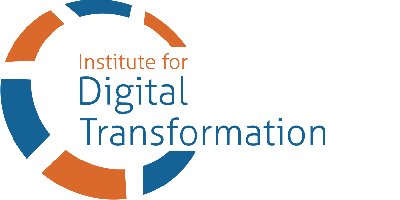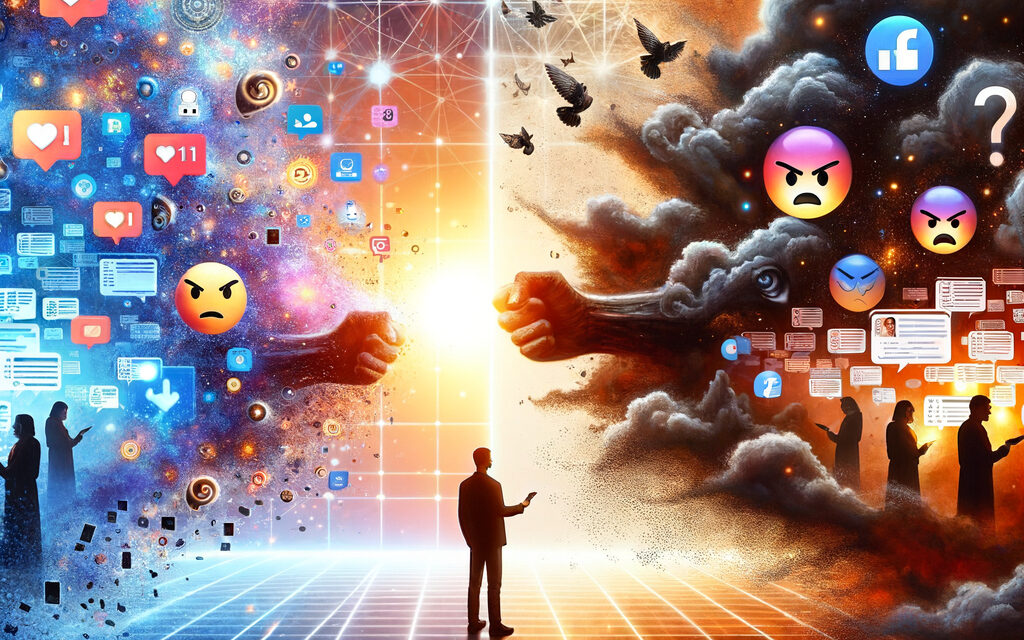With algorithms shaping what our minds absorb in the digital era, is conflict now inevitable? Habits are self-perpetuating – the more that thoughts are repeated, the more hardwired they become, and then repeat using less brain energy. Yes, being hateful can be achieved more efficiently.
This article explores the phenomenon of conflict: why it occurs, how it expresses in the digital era and a way to resolution.
Conflict in our lives
“Begin each day by telling yourself: Today I shall be meeting with interference, ingratitude, insolence, disloyalty, ill-will, and selfishness.” Marcus Aurelius1
Conflict is a human phenomenon. The digital era is relatively recent, yet humans have fought since the beginning of time. Given that the brain naturally prioritizes threat, more attention is paid to conflict and differences are amplified. This is not new but instantaneous connection is. There used to be a lag between thinking and acting. People were physically connected with other members of their community and so were aware in real time of the effect of actions on others. In those closer physical communities, you would stop, consider, think, then act. Now, action bypasses the slower, thinking brain.
Fight or Flight now overrides Think or Check. The bandwidth of conflict has expanded exponentially so that it dominates mass communication. After the recent US election, a therapist advised people to stay away from family at Thanksgiving who voted for ‘the other side’, arguing self-preservation. (What?!)
How conflict is expressed
The well-known Thomas-Kilman Conflict Mode Instrument 2 explores different ways people respond to conflict whether they are cooperative or non-cooperative and assertive or non-assertive (similar to extrovert versus introvert). There is not one-size-fits-all when it comes to how conflict is expressed and it may differ according to the personality type, but when emotions are whipped up, people may be more expressive than would normally be the case in their everyday lives. That is not a digital issue, but hiding behind a screen is. Not physically interacting with (or empathizing with) the object of conflict is the oft-quoted ‘keyboard warrior’. This is a digital era issue.
Many people in customer complaints roles say people act very differently when they are complaining in person – at a front desk – from when they are on the phone, emailing or web messaging. Connecting with the target of aggression as ‘human’ typically improves emotional regulation.
Conflict has been so prominent over the last five years. Think of the pandemic and the wars that have broken out since. A number of contentious elections have caught worldwide media attention and disagreement seems to dominate public discourse. You no longer have different views – you’re quite clearly wrong. In fact, you are not simply wrong, you are deplorable, even evil. When these sentiments are transferred to social media, and algorithms amplify extreme (especially negative) views, people are caught in echo chambers where emotions spiral. The phenomenon of mob behavior transfers online and similarly spirals.
A path to peace
Negotiation is the common approach to conflict resolution, and the rule of thumb is that cognition should override emotion. Skill and technique needs to outweigh knee-jerk reaction; collective interest must outweigh individual interest and instant gratification. The win-win approach is explored in The Infinite Game by Simon Sinek, and contrasted with the zero-sum game.3
I’m not writing from personal expertise about how to bring peace to conflict. In my work, I can strap on the gear and broker a peace, but in my personal life, I can get swayed by emotion. Instead, I have sought the counsel of ‘greats’ – people who have proven capability in situations where they were personally involved, and were even the target of the conflict.
These are three such role models:
- Welby Ings4,5 doesn’t want to be referred to as a doctor or professor. Welby was horribly served by the education system. He couldn’t read nor write until age 15, yet he went on to become a teacher. (How’s that for taking ‘the enemy’ head on?) He was expelled from school as a boy, thrown out of Teacher Training college, and parents insisted he was fired from teaching positions. In his words, he spent half his life fighting and half his life negotiating. His later years have been a blaze of glory, winning prestigious awards, becoming an architect of New Zealand’s first technology curriculum, having films screened at Cannes and Berlin and being shortlisted for the Oscars, winning the inaugural NZ Prime Minister’s Supreme Award for Teaching Excellence and becoming an elected Fellow of the British Royal Society of Arts. Character is what his years of struggle built, and in turn, he has transformed the lives of many.
- George Mitchell6 worked for years on the Northern Ireland Good Friday peace agreement and explained to Alan Alda in his podcast Clear + Vivid that he used to have a bit of a temper but over time, he learned to listen, especially to those he disagreed with. That says a lot about character.
- Steve Hansen7 – New Zealand rugby national coach – took New Zealand to back-to-back Rugby World Cup wins. He said in an interview that there is plenty of disagreement among the All Blacks during game planning but there is an agreed rule of engagement: you agree and commit or you disagree and commit. He once commented on his competitiveness, and how he used to argue to win, then realized that he had ‘lost the person’. Admitting fault: character.
Conflict Resolution
For conflict to add value, I have learned:
- The way you pursue goals matters
- You have to dig really deep to be worthy of fighting for the cause without sacrificing what is right
- Character has to be substantial and generous
- You need a toolkit of sharp skills that you steadfastly deploy (especially when you don’t feel like it, and particularly when you see the other party as ‘wrong’)
- Focus on the outcomes both parties want so that similarities can cement the work towards agreement
When George Mitchell took office as majority leader, he went to see Bob Dole, the Republican opposition leader and explained that he had come to tell him how he intended to act towards him. They agreed, shook hands and remained firm friends across the years while disagreeing most of the time.8
“I have told my team over the years that …at least 10% of the people in society are very difficult personalities. And if they are not encountering one daily then they are not working hard enough.” David Duczer deBoisblanc9
As one client recently said, “When we disagree, we must immediately get in a room together.” They had learned the hard way how much time and energy is lost from misunderstandings and assumptions.
Resolving conflict in war-torn zones, warring factions are instructed when they meet to first spend time simply talking about their families. (It may seem extreme to compare a corporate environment with a war zone, but the similarities are there.)
Conflict with others is part of life but can we go one step further and say that without disagreement, our thinking is unlikely to be at the level needed for the challenges we face? Different viewpoints can ensure consideration of various factors and lead to better decision making.
Can we then see conflict as part of the evolution needed for next-level thinking? Disagreement does not have to be negative; with the right approach, it can improve our decisions, enhance the world we live in and therefore enrich how we experience life.
Sources:
- Marcus Aurelius. https://www.goodreads.com/quotes/290880-begin-each-day-by-telling-yourself-today-i-shall-be
- The Thomas-Kilmann Conflict Mode Instrument. https://kilmanndiagnostics.com/assessments/
- Sinek, Simon. The Infinite Game. Penguin Random House. 2019. https://simonsinek.com/books/the-infinite-game/
- Ings, Prof Welby. Disobedient Teaching. Otago University Press. 2017.
https://www.amazon.com.au/dp/1927322669?ref_=mr_referred_us_au_nz - “Disobedient Thinking” by Cherri Holland. Apr 30, 2017
https://www.institutefordigitaltransformation.org/disobedient-thinking/ - Clear + Vivid. Alan Alda interviews George Mitchell. Google Search
- “About Steve Hansen.” Halo Sport. https://halosport.co.nz/project/steve-hansen/
- “Life’s Work: An Interview with George Mitchell” by Alison Beard. Harvard Business Review. June 2016. https://hbr.org/2015/06/george-mitchell
- “Marcus Aurelius on Difficult People” by David Duczer deBoisblanc. February 28, 2015.
https://www.linkedin.com/pulse/marcus-aurelius-difficult-people-david-deboisblanc/
Tag/s:Artificial IntelligenceBusiness TransformationDigital DisruptionDigital EraEmpathyPersonal Development





